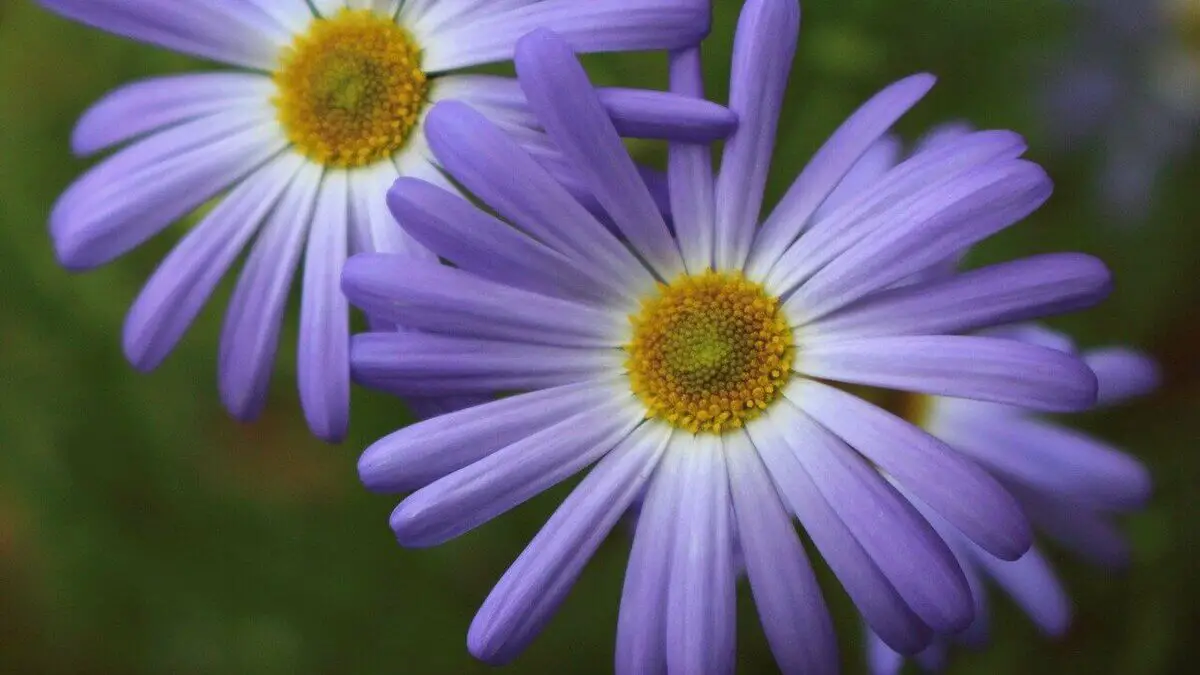How to Grow Swan River Daisy Plants
The swan river daisy (Brachyscome iberidifolia) is an herb growing annually in the West Australian region. This species is hardy to several growing zones. Being drought-tolerant, it can easily adopt different environmental conditions.
This article focuses on the Swan River daisy, its description, propagation, companion plants and uses.
In 1837, George Bentham described this species as “Brachycome iberidifolia”. However, the original publication included the ‘s’ alphabet in the generic name.
Depending on the cultivar type, the blooms have various colors including white, pink, and lavender. However, in mass cultivation, blue colored blooms are most popular due to their eye-catchy appearance.
In warmer zones (8 – 10), you can grow these plants as herbaceous perennials. But they may not bloom well in very hot climates.
Table of Contents
Description of Swan River Daisy

Swan River daisy, as annual, has multiple branches. It can grow 1-3 feet in height and spread about 1 – 2 feet wide. The green leaves have long and narrow segments emerging from midribs. The pseudanthium (flower heads) appear anytime between the August-May months. Depending on the cultivar, the flowers have various colors including white, pink, blue, and violet. Each flower measures about an inch across (Diameter).
Propagation of Swan River Daisy
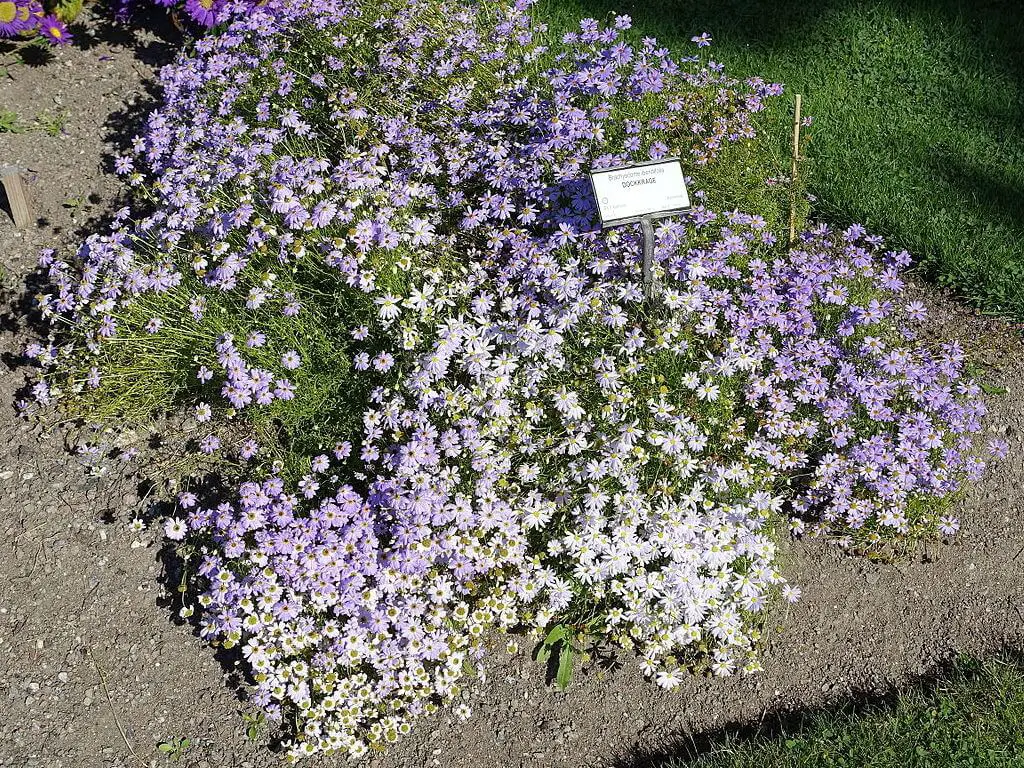
Most flowering plants, including the Swan River daisy, prefer to grow in sunny locations. These plants can thrive in locations that receive at least 6 hours of broad daylight. However, they can grow in locations with partial shades too. But the blooming intensity may be lessened correspondingly.
Swan River daisy requires well-draining, rich and moist soil for healthy growth. We recommend you ‘study’ the soil quality before fertilizing or planting. Overfertilization may cause the roots to burn. If nitrogen content is higher, the plants may grow leggy.
If the soil quality is poor, it may have an adverse effect on blooming. So, it is advisable to amend the soil with phosphorous-rich fertilizer like 5-10-5 Espoma before planting.
In USDA Hardiness Zones 2- 8, you can grow them as annuals. Similarly, in USDA hardiness zones 9 -11, these plants can be grown as perennials. These plants are hardy to heat and drought. But they cannot tolerate extreme hot or cold temperatures.
During extreme heat, these plants may wilt. In frosts, the flowers may taper off. However, the grayish-green foliage will continue to provide a beautiful scenario throughout the winter season.
From Seeds
You can grow these plants easily from seeds. You can either purchase Swan River daisy seeds from online stores or nearby nurseries. If you already grow these plants, you can also harvest the seeds yourself.
After the growing cycle, when the blooms begin to fade, snip them off with garden shears. Then, wrap them with paper towels and store in a dry place. When they dry completely, just pull open the pods to harvest the seeds. These seeds are very small. So, be mindful while collecting them.
Indoors
Start the process in the spring. Generally, 6 – 8 weeks before the last average frost date, you can start sowing seeds in a container.
1.) Fill the container with a loose starter soil mixture.
2.) Sow the seeds at least half-inch deep.
3.) Water thoroughly and maintain the moisture.
4.) You can expect germination anytime between 10-18 days when the average room temperature is about 70 degrees Fahrenheit.
5.) After the frost, when a set of true leaves appear, you can transplant the fresh seedlings in your gardens. Make sure to space the plants 6 inches apart.
Outdoors
After the frost periods, you can directly sow the seeds outdoors. The sowing procedure is the same as stated above.
Typically, the flowers last about 2- 4 weeks. So, if you wish the blooming sequence to last throughout summer, sow seeds every alternative week. For instance, mid-summer sown seeds produce blooms in fall. In addition, pruning faded blooms will encourage fresh growth.
From Cuttings
This is also an easy method that has a more than a 90% success rate. So, most gardeners prefer this method.
Generally, these plants have energy readily stored at the base and root systems during the spring (just before flowering). So, if you snip off the shoots in this season, both the parent and the cuttings can regrow faster and healthier.
1.) Select a healthy plant free from pests and diseases. Snip off the shoots using garden shears, in one cut without damaging the stem, just above 1-2 inches from the ground.
2.) Make the cutting about 2-3 inches only by further snipping and disposing of the top portion of the stem. Remove the foliage from the bottom half of the cutting. Make sure it has at least 2-3 healthy leaves on its top portion.
3.) Plug cuttings in a seedling tray that is filled with 10% peat moss and 90% perlite. Water thoroughly.
4.) Place the trays in a well-lit room. Water regularly and maintain the soil moist but not soggy. You can expect roots to appear in about a month.
5.) After the cuttings root, Plant them in a pot filled with a good quality potting mix. water thoroughly.
6.) Place the pots in spaces (indoors) that receive indirect sunlight.
7.) Water periodically and maintain the soil moist but not soggy.
8.) For stronger, faster root growth, use seaweed-based fertilizer like seasol.
9.) In about 3-4 weeks’ time, the cuttings will establish themselves in pots. Then, harden off the plants for a couple of weeks.
10.) Finally, you can transplant the cuttings permanently in your gardens.
Caring of Swan River Daisy
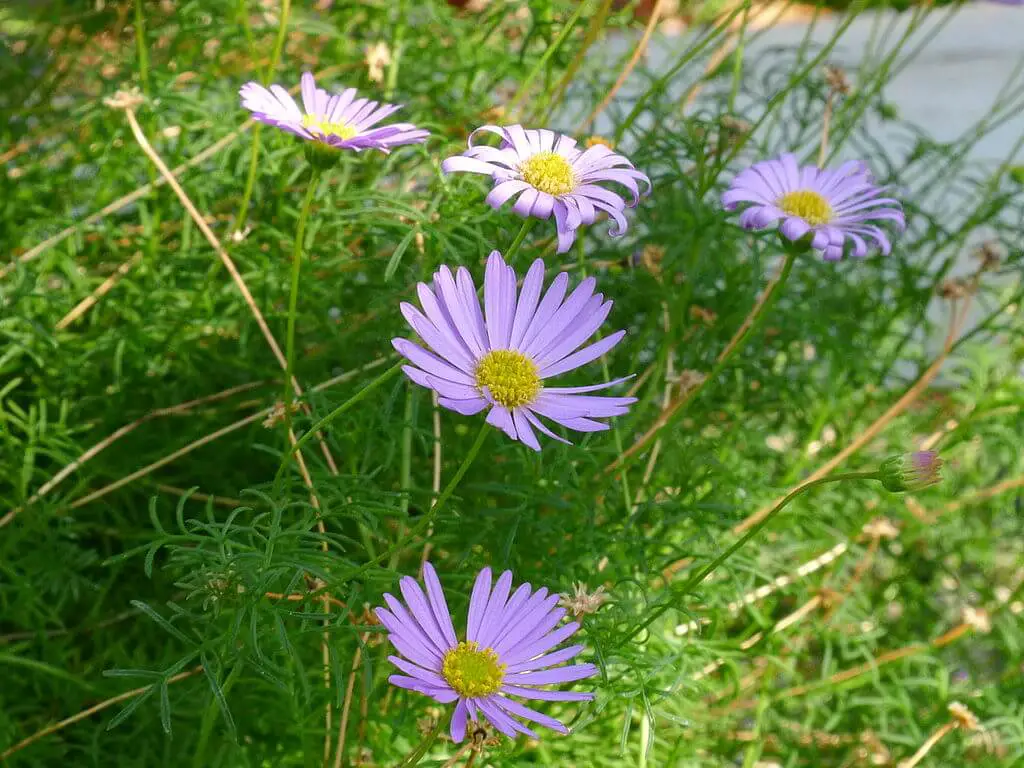
Photo by chipmunk_1 (CC BY-SA 2.0)
These plants are easy to maintain. Generically, the Swan River daisy plants bloom well in cool summers. However, in hot summers, the plants may slow down blooming or even stop blooming completely.
Being hardy, these plants can thrive in a wide range of soils including clay, sandy, or even rocky lands. However, regular fertilizer applications encourage their stress-free growth.
If you grow them in pots, apply slow-release fertilizer such as the 5-10-5 Espoma every week. Feeding with liquid food will provide an added advantage.
Similarly, for the garden-grown plants, fertilize initially at the starting of the growing season. Then, continue fertilizing (NPK 5-10-5) every month. Feeding them with liquid food further encourages healthy growth.
Being drought-tolerant, these plants seldom require watering after establishing themselves. If dry weather persists for long durations, water them for at least a week. Avoid overwatering, as it may lead to root rots and other fungal infections.
Butterflies and birds have a natural attraction towards Swan River daisy plants. However, deer and rabbits mostly eschew these plants. So, fencing may not always be needed.
Companion Plants
Generally, the swan river daisy plants provide spectacular scenery, when interplanted with companion plants. we have suggested a few companion plants below:
Gazania
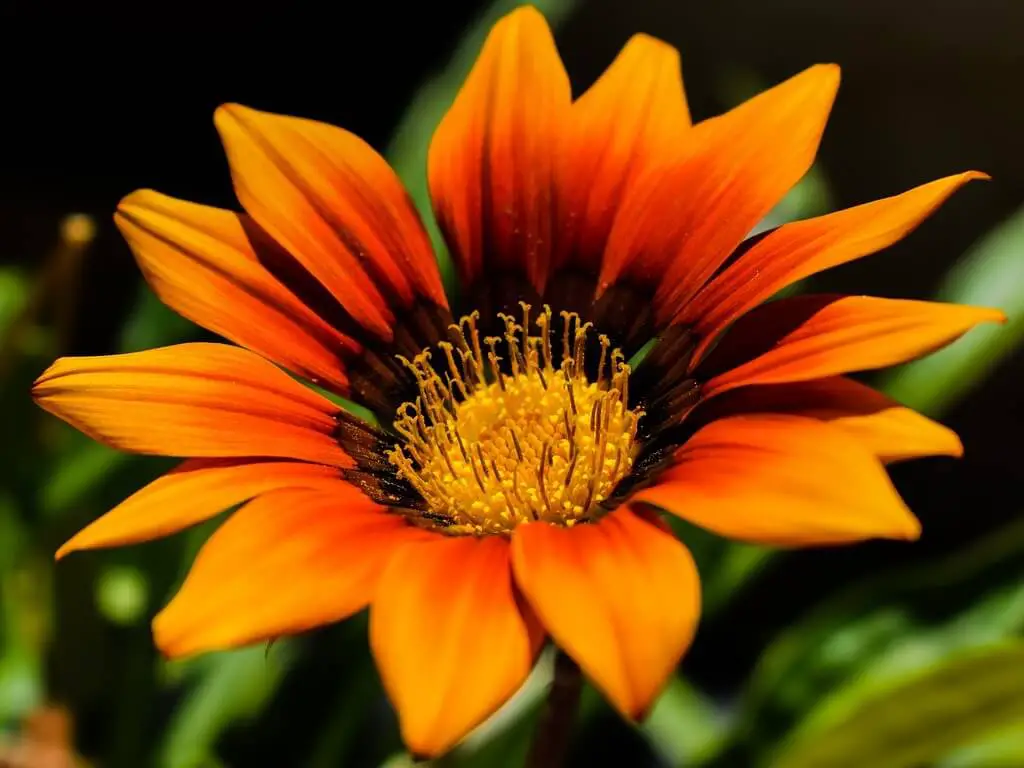
In general, Gazania is hardy to almost any kind of soil and temperature. Mostly, these plants thrive as perennials in warmer zones (9 -11) and as annuals in cooler zones.
Gazania usually produces bold color flowers (mostly orange), from summer to frost. You can grow them either in gardens or containers. Normally, these plants do not require fertilization or immense watering and are easy to maintain.
Geranium

Photo by Relic38 (Wikimedia Commons) (CC BY-SA 3.0)
In fact, Geranium plants are famous in the garden industry for well over a centennial period. These plants have set a standard for decorating garden beds, perimeters, borders, container gardens Etc., which others follow. These plants can thrive in hot weather and dry spells too.
Similarly, Regal (Martha Washington), a Geranium cultivar offers more delicate looks and thrives well in cool weather (Spring, Fall).
Normally, you can grow Geraniums as perennials in warm zones (10 – 11) and as annuals in cooler zones. If you can provide adequate lighting, these plants can bloom all year long indoors.
Lisianthus

Photo by Downtowngal ( Wikimedia Commons) (CC BY-SA 4.0)
Native to American prairies, some annual varieties of Lisianthus look like blue roses. These elegant flowers are one of the best in the world for cut flowers. They can last up to 3 weeks in vases.
However, these flowers are extremely tricky to propagate from seeds. So, it is advisable to opt for seedlings. These plants also require adequate caring to grow healthier.
You may need to stalk tall cultivars of Lisianthus. But Modern dwarf varieties are carefree comparatively.
Pests and Diseases
Normally, these plants are free from pests and diseases. However, you have to be watchful regarding a few common troubles.
Pests
Garden Snails and Slugs
The garden snails (Helix aspersa) are closely related to nefarious slug. Both of them are known to chew the tender leaves which may even kill the plants. Slugs can accelerate the damage further by feeding on almost any part of the tender plant.
The snail and slug infections can be treated in many ways. You can introduce fierce predators like Toads, Chickens, Raccoons, Ducks Etc. They do not harm humans or gardens. But they love to feed on snails and slugs.
You can also sprinkle gritty substances like diatomaceous earth, sand, or crushed eggshells around the plants to deter them.
If you prefer organic methods, you can place Copper wires, apply Vaseline fluids Etc., around the plants, or simply use Baits.
Diseases
Powdery Mildew
Powdery mildew is a common fungal disease that affects swan river daisy plants. Mostly, it infests plants under highly humid environments and moderate to hot climates. Infected plant parts have a white powdery substance on them. Almost any part of the plant can be affected by this disease.
You can treat this disease with specially formulated and approved fungicides like serenade fungicides or powdery mildew sprays.
Uses
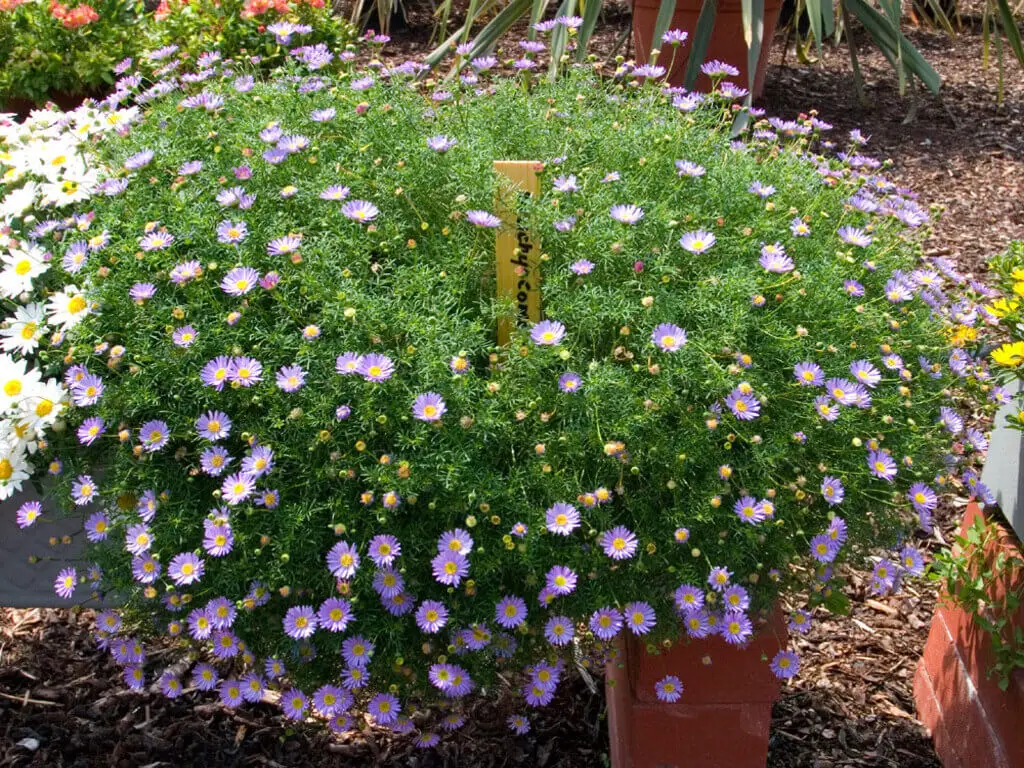
Photo by Martin Bahmann ( Wikimedia Commons) (CC BY-SA 3.0)
Swan River daisy plants can decorate your spaces as ground covers. You also have the option of selecting single-colored flowers or multi-colored flowers to cover your grounds. In addition, if you interplant them with companion plants, they provide exceptionally beautiful scenery.
You can also decorate your garden beds, borders, perimeters, backyards Etc. with these plants.
Due to their mounding habits, Swan River daisy plants can fit perfectly in hanging Gardens. You can also use them to decorate your patios or other in-house spaces by growing them in pots or allocated spaces.
Similar Posts
How to Grow Stock Flower Plants
How to Grow Parrot Tulips in Gardens

